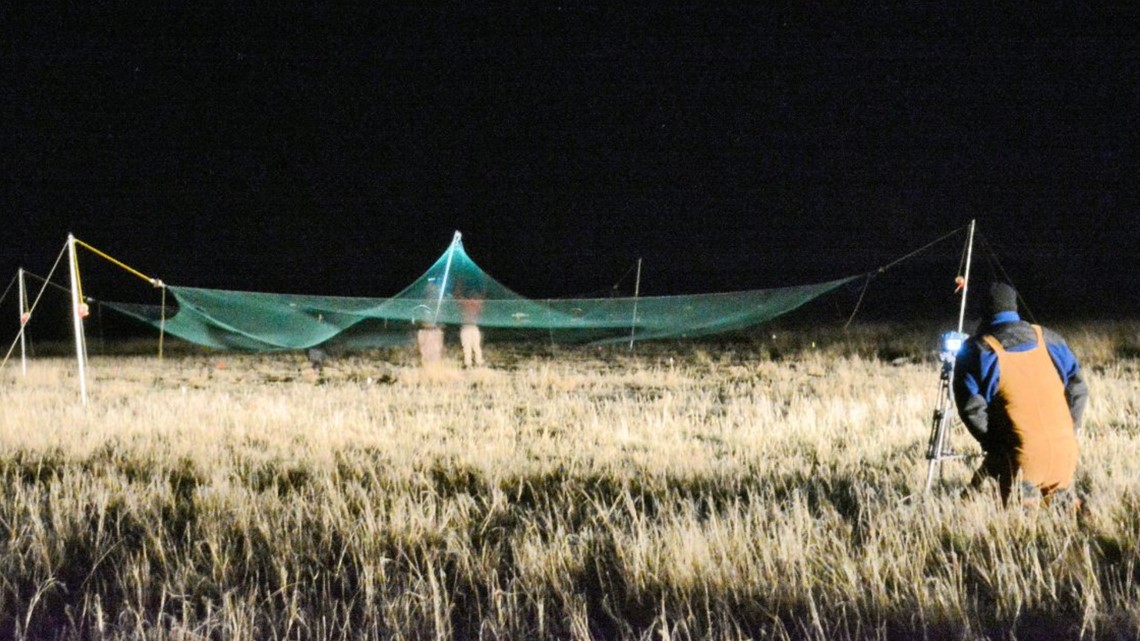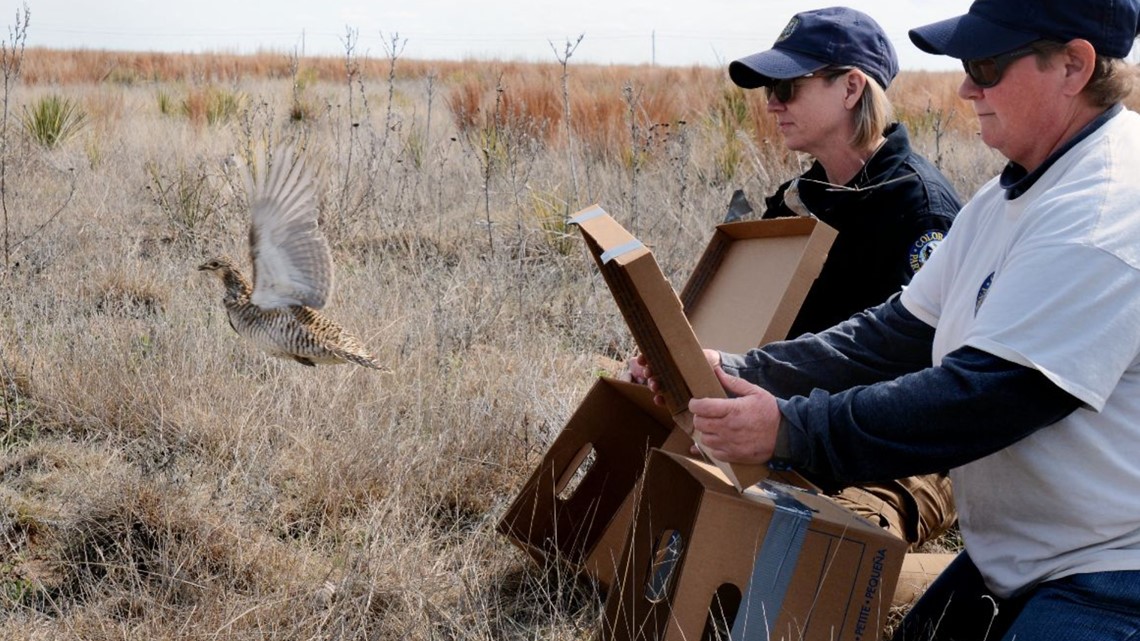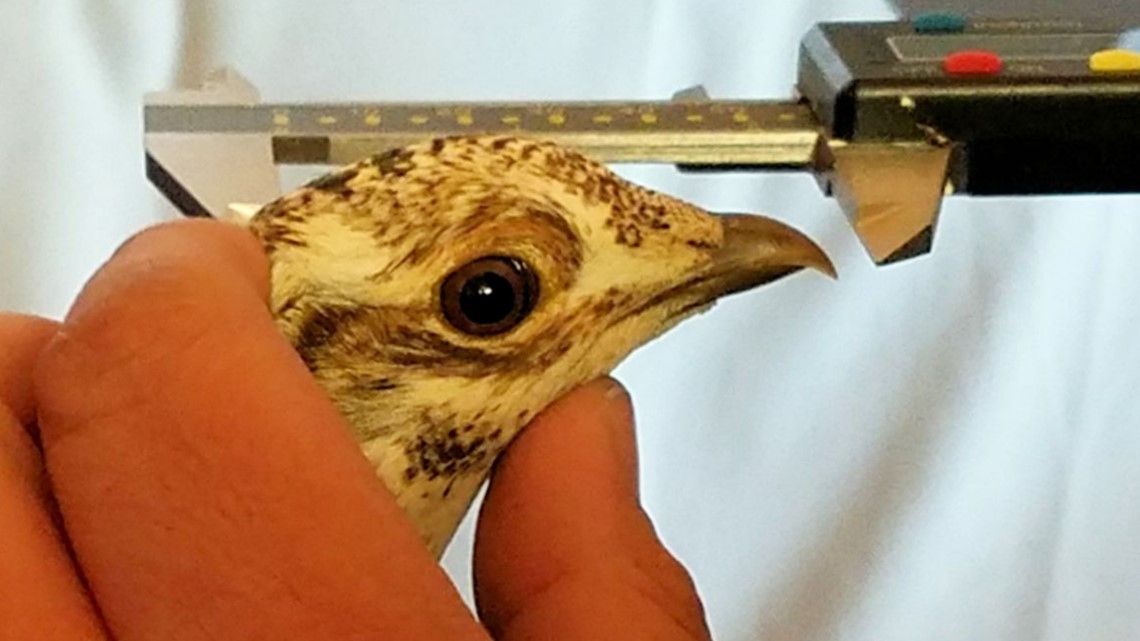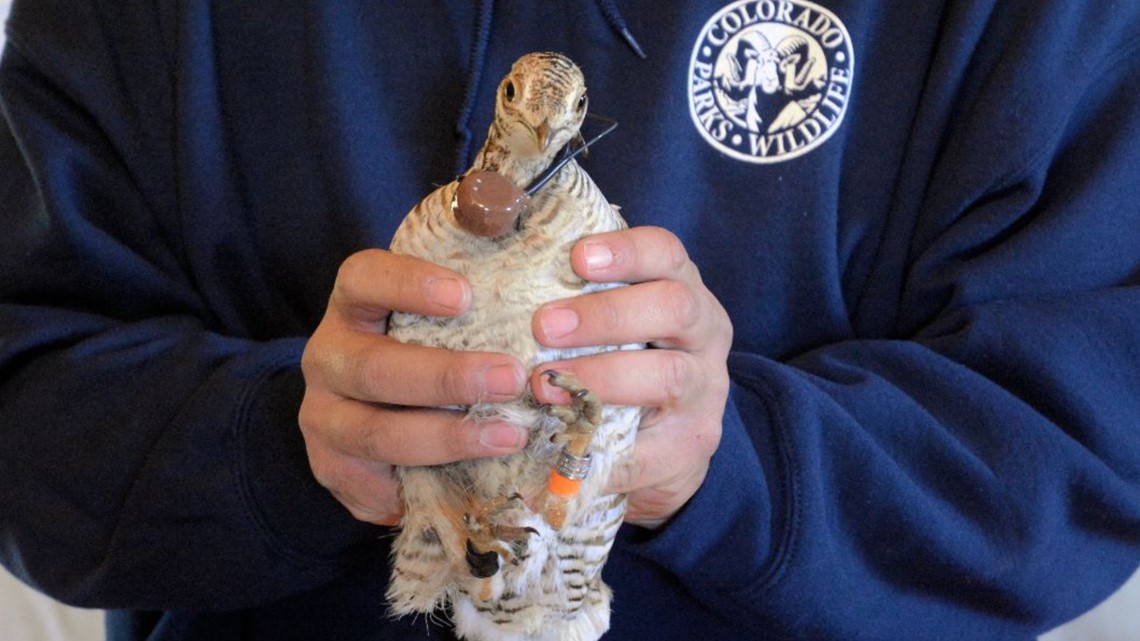Wildlife biologist catch lesser prairie chickens for release in Colorado
BACA COUNTY, Colo. – Author: Janet Oravetz, Published: April 24, 2019
Colorado Parks and Wildlife (CPW) biologists just wrapped up a grueling month-long effort to trap lesser prairie chickens on their breeding grounds in Kansas. It’s a part of a larger four-year effort to reestablish lesser prairie chickens on their native sand sagebrush and grasslands in Colorado.
CPW biologists, led by Jonathan Reitz and Liza Rossi, worked seven days a week to catch the birds, rising well before dawn each day and sitting for hours in blinds, shivering in the dark in below-freezing temperatures, a release from the agency said.
They used large, remotely controlled drop nets and traps to catch the birds. The biologists hid on the perimeter of the breeding grounds and waited for the birds to arrive at dawn and begin their courtship rituals.

When they wandered under the net, biologists dropped it and raced to the lek (the name for their breeding ground) to secure them. The birds were bagged and taken to a field lab where the biologists weighed and measured them, tagged and banded them before driving them 3 1/2 hours to southeast Colorado for release the same day. The team also released chickens in far southwest Kansas to rebuild populations there.

During the summer months, the team will monitor the newly established Colorado leks and nests to determine if the rare and vulnerable birds are taking up residence or have flown the coop for home.
Lesser prairie chickens, which once numbered in the tens of thousands in Colorado have mostly disappeared in recent years.
The target recovery area is a 330,000-acre swath of sand sagebrush and grasslands straddling the two states including the Comanche National Grassland in Baca County, Colo., and the Cimarron National Grassland in Morton County, Kan., as well as privately owned rangeland and Conservation Reserve Program grassland. Both the Comanche and Cimarron grasslands are owned and managed by the U.S. Forest Service.
Historically, the region was home to large flocks of lesser prairie chickens. But the conversion a century ago of grasslands to cropland, and the resulting Dust Bowl in 1932 wiped out many of the birds.
More recently, the lesser prairie chicken population was devastated by severe snowstorms, particularly in December 2006, followed by years of drought. By 2016, biologists counted just two males on the Comanche and five males on the Cimarron.

Over the past four years, Reitz and Rossi have relocated 103 males and 102 females to the Comanche. The team also released 101 males and 105 females during the same time period just east of the state line in Kansas, making this the largest known translocation effort for lesser prairie chickens.
But re-establishing populations isn’t as simple as catch-and-release. Reitz and Rossi discovered the birds often don’t easily adjust to their new surroundings.
“They often take flight upon release and can travel great distances. We’ve observed some traveling 60 miles or more from the release site.”
Reitz
The CPW team knows exactly how far some travel because they attached monitoring devices to the chickens before their release. Most got beacons that allow them to be tracked by radios using a special antenna. Others were fitted with solar powered, GPS backpacks that transmit the chickens’ location 10 times a day. CPW expects to monitor them for the next two years.

“We know some birds flew to Texas and Oklahoma,” Reitz said. “It’s not uncommon for them to take off upon release and fly great circles before eventually returning to the release spot and settling down.”
This year CPW is releasing birds on an active lek for the first time. The goal is for them to join birds from the previous year’s translocation efforts. Biologists are hopeful the chickens will stick around.
Comments (0)